Product Reviews for members by the members is what we really like and want here on TinBoats.net. Unsolicited reviews allow you to make decisions on what you are buying, not just paid product pushers cramming product down your throat. This Review was done by TinBoats member Onthewater102 as I asked how he liked the Piscifun Phantom reel he talked about on the forum. Read it for what it is, Piscifun did not pay for this review, the reel was NOT free, it was paid for, and Piscifun in NOT a sponsor fo this forum. OntheWater102 reached out to Piscifun for answers to his questions and they liked the idea of the review so much that they offered a 15% discount for TinBoats(bottom of review) if you decide you would like to try one. I know I will be buying one.
Piscifun Phantom Member Review
In trying to track down the source manufacturer for my beloved Bass Pro Shops Pro-Qualifier reels I found they were produced by the same corporate conglomerate that also produced Abu, Mitchel, Penn, and Pfleuger (along with several other brands they seem to have since sold-off). It seemed reasonable in the age where efficiency is king they wouldn’t be using multiple redundant manufacturing facilities. This, in turn, sent me searching for companies they might be outsourcing to, which lead me to Doyo Fishing, Haibo Fishing, and Banax Mall, to name a few, in search of unbranded reel designs I was familiar with their branded counterpart. These manufacturers accept orders bulk shipments of reels without branding. I realized if these were available there must be companies carrying quality reels without expensive brand labels on them out there, as the manufacturers aren’t going to totally retool to make a second line of reels for the aftermarket – most of the parts should be the same.
This was how I found the Piscifun Phantom, searching around for reels with recognizable exterior features and then working backwards to parts diagrams and trying to match up the mechanical designs to reels I’m already familiar with as a baseline for weeding out setups likely to have issues. After reading other’s reviews of the Phantom I felt safe enough to roll the dice and shell out the money for a test subject. After taking it for a test drive fishing with it once I was impressed enough to totally tear it down and see what lied under the hood. The best reel I have in my possession at this point is an Abu Revo Sx Gen 3 7.1:1 which at $160 retail appeared to be more than a worthy benchmark for the $70 Phantom 7.0:1 to measure up against.
Piscifun Phantom
Anyone opening a Phantom will be greeted with an unfamiliar sight these days – a neoprene reel cover included with the reel. This doesn’t come with the Abu.
One of the big selling points on the Phantom that caught my eye to investigate it further was its weight – per the manufacturer it should be 5.7oz, though online reviews all seemed to agree it was 5.6oz out of the box. My experience was no different.
The Revo already had line on it, so after weighing in the naked Phantom I spooled it up with the same 40lb power pro the Revo was wearing to make an apples to apples comparison. Revo came back at 6.7oz carrying a full spool of line, the Phantom weighed in at 6.1oz – making the Revo 10% heavier. Granted, the Phantom uses carbon composite materials for the frame, whereas the Revo uses aluminum, but the weight savings is very noticeable when installed on a rod. In my searching only premium reels costing much more than even the Revo come close to this weight, though they do it by using expensive alloys which I can only assume add some degree of durability to the assembly.
The exterior of the two reels feels very similar – I imagine the composite side plates of the Revo are a similar material to those of the Phantom. The Phantom uses an elongated line guide whereas the Revo uses a round one. Both have a titanium guide for durability. The crank handle of the Phantom is carbon, whereas the Revo uses an aluminum one. Looking on the side opposite the crank we see the magnetic brake controls of each. The Phantom has a larger dial with marked gradations:
Taking the side plates off and viewing the spools we see the Phantom also has a centrifugal braking system which the Revo SX is lacking. You need to move up to the Revo STX at $200 to get the dual braking system feature. Both reels have a shielded bearing in the side plate with the magnetic brake:
Revo Sx Magnetic Brake & Bearing:
Phantom Magnetic Brake, Drum for the Centrifugal Brake & Bearing:
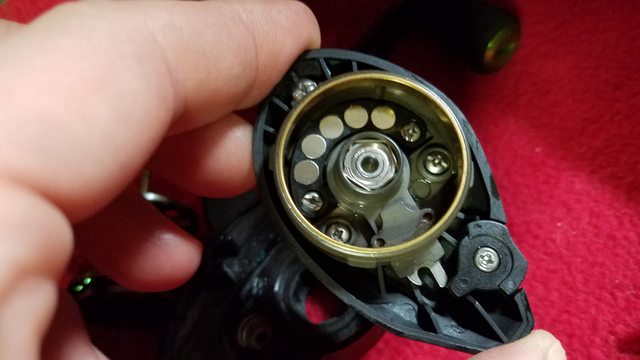
Phantom Centrifugal Adjustable Brake (not present on the Revo):
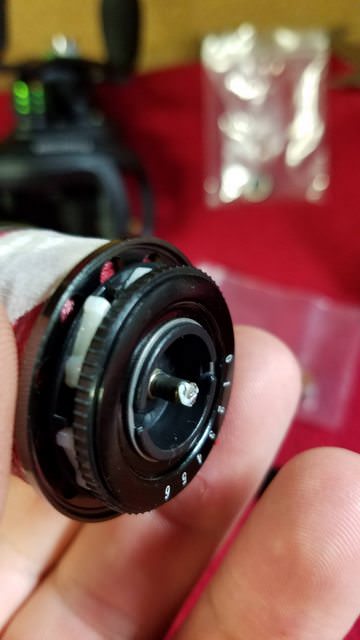
While we’re on the spools, let’s get some measurements there as well as this is an area many people forget matters greatly in the performance of the reel. Everyone these days looks to gear ratios when trying to compare reels to find the “faster” reel, however, spool size factors into the equation and can often be an overlooked difference. This is an illustration of that point. The Phantom has the lower gear ratio, at 7.0:1 vs. the Revo at 7.1:1. A small difference apparently favoring the Revo in speed. However, the Revo only retrieves 29″ per turn of the handle whereas the Phantom retrieves 30.3″, making the real world performance of the lower geared Phantom faster than the higher geared Revo. I always look at retrieval rate when I’m after a fast retrieval speed as it’s all that matters. Some measurements on the filled spools will demonstrate these differences:
Phantom – 1 1/4″ in diameter and 13/16″ wide (spooled):
Revo – 1 3/16″ in diameter and 15/16″ wide (spooled)
Personally, I wish the Phantom had a shallower spool – the OD when full is fine, but I still filled it part-way with backing adding unnecessary weight to the assembly in line I’ll never use that’s loaded strictly to fill space on the spool. I had the same amount of backing on the Abu, so this comment is mutually applicable. As for the Abu boasting the wider spool, there is less of an increase in RPM’s as the line is stripped off during the cast, though perhaps this is desirable to retard the effect of the lure slowing down further along the cast trajectory due to wind resistance etc. but I digress…
Speaking of spool speed on the cast, both reels have a click-adjustment integrated into the spool tension knob though the designs are slightly different. Both reels have a shielded bearing on the spool shaft alongside the pin that catches on the pinion coming from the internal gearing. The Phantom has a longer spool shaft which runs through the pinion and all the way to the spool tension adjustment knob. The Revo’s spool shaft ends at the pinion, and it has a second shaft segment running from the pinion to the tension adjustment. Both tension adjustments have a shielded bearing as well, though the Revo’s can be removed from outside the reel, whereas the Phantom’s retaining clip spring is on the inside of the gear case. Both can be lubricated by removing the knob and applying oil to the bearing from the outside. The click mechanism on the Phantom is the same mechanical spring design as both the Revo and Phantom use for their respective drag adjustments, while the click mechanism on the Revo is a plastic washer with serrations on the back that activate a flat spring in the knob, which is much more obnoxious to re-assemble after lubricating the bearing as it has a tendency to fall.
Phantom tension adjustment guts:
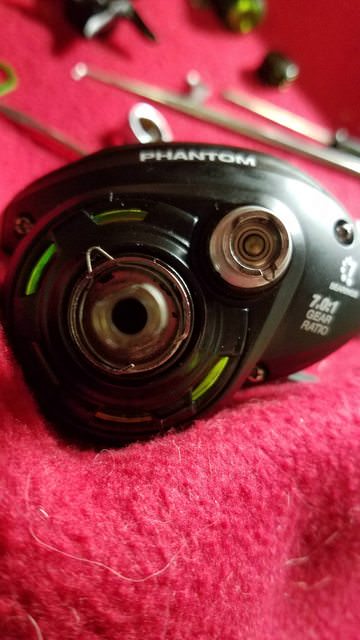
Here you see the Revo’s plastic washer sitting serrated side up:
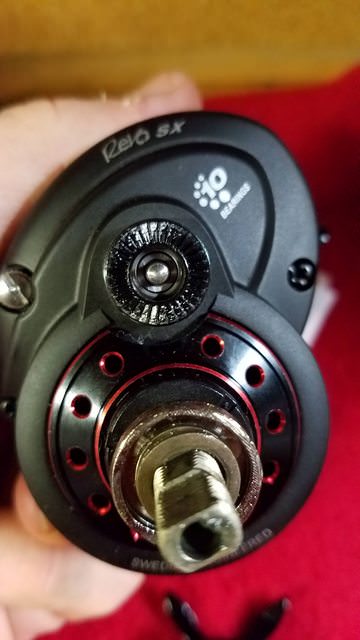
Here’s the backside of the washer installed in the knob as it needs to be to retain the spring and reinstall the knob:
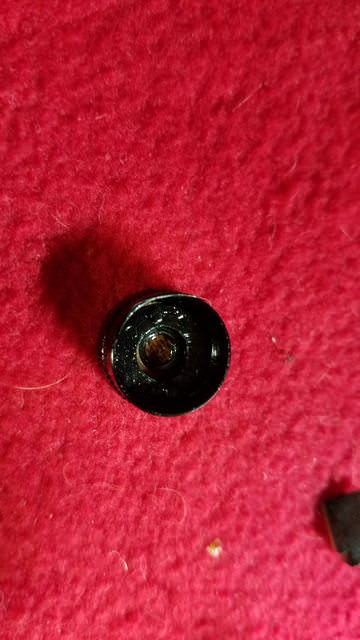
Last, this is the spring inside the Revo’s knob:

For comparison here’s the inside of the Phantom’s knob, trying to show the serrations machined into the inside down near the cushion:

Finally, cracking open the gear cases we can see what’s really going on inside each. Both use an aluminum main drive gear with helical teeth – I’m still trying to verify claims of other reviewers on each, but the Revo purportedly is made of 2024 aluminum and the Phantom’s is 7075. Both are aerospace grades of hardened aluminum alloys, though the 7075 is superior. I will amend this once I’m able to either confirm or refute these. What is most noteworthy here is the Revo makes extensive use of plastic in the various internal linkages, whereas the Phantom contains predominantly metal components. Furthermore, the Phantom has an extra bearing on the cranking shaft supporting the anti-reverse bearing, the Revo does not have this.
Phantom internals – note the shielded bearing atop the anti-reverse bearing housing and stamped metal linkages:
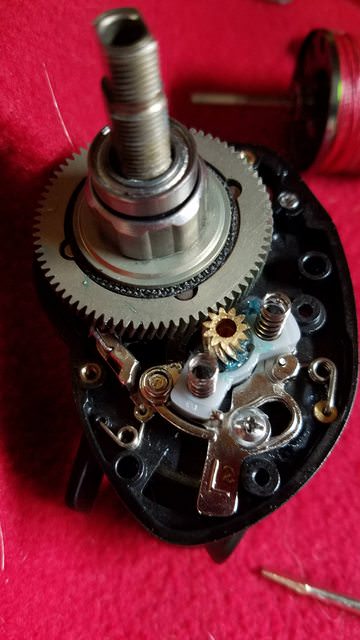
Revo internals – no support bearing for the crank gear and black plastic linkages connecting the internals to the thumb bar:
More views of the Revo showing the anti-reverse bearing and lack of secondary support bearing:
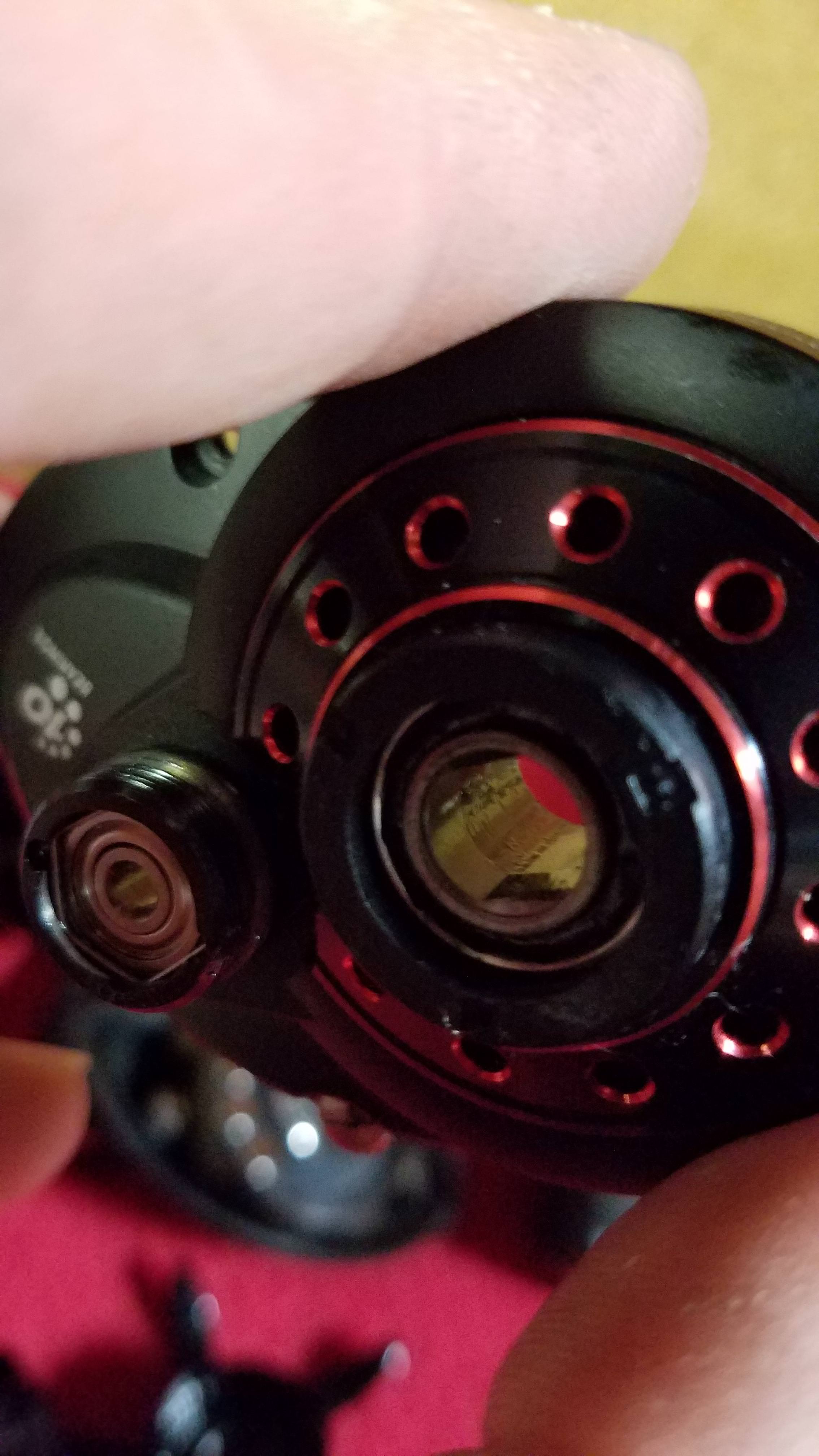
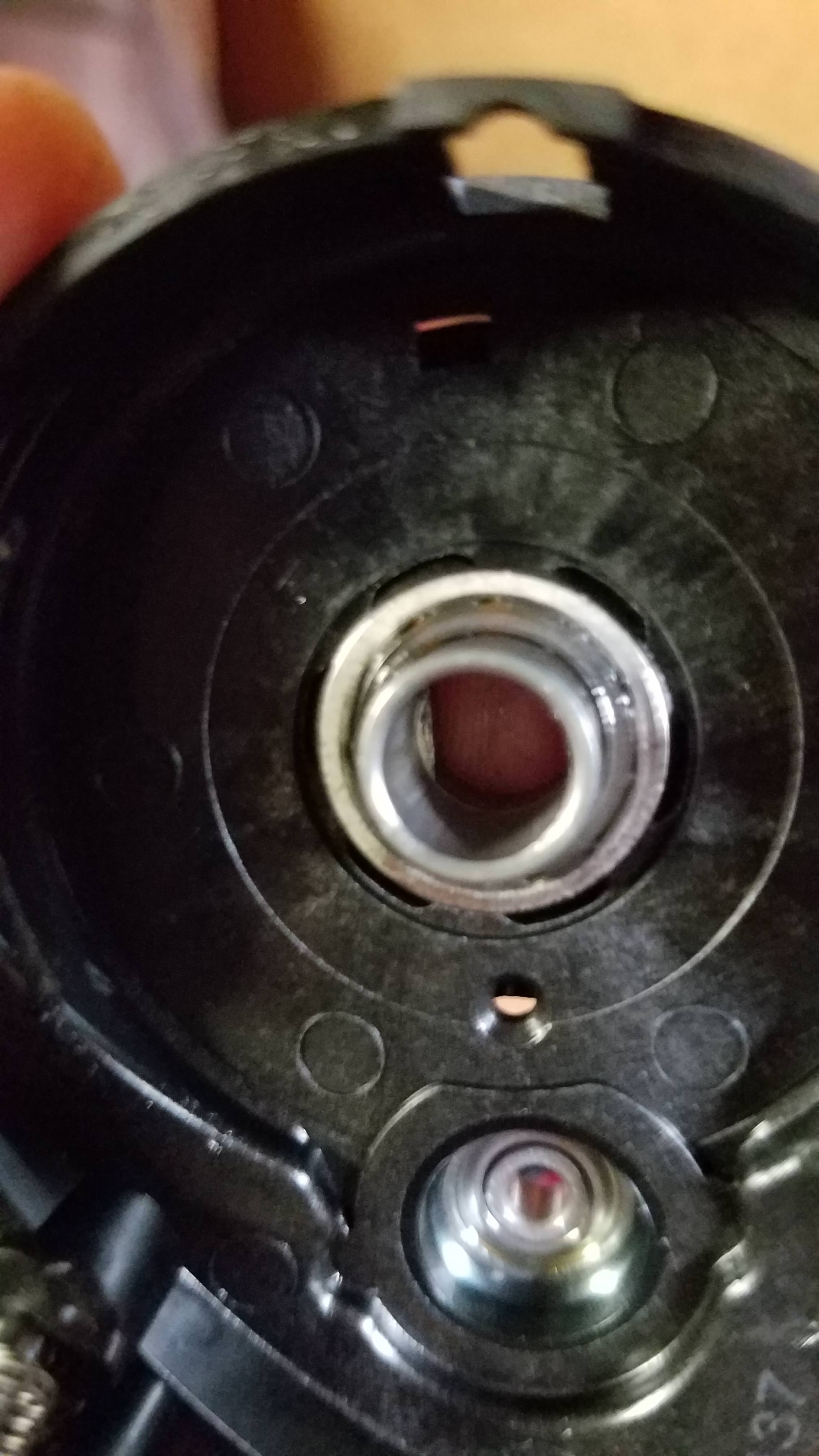
Both reels use a triple carbon drag washer setup. I didn’t get a shot that included the inner bearing for the crankshaft, but both have a shielded bearing inside between the drive gear and the frame. There isn’t much difference here, without test equipment to analyze the consistency of the drag I will say they both feel the same when pulling by hand for what little that’s worth.
The Revo side plate included a lubrication port, which is not present on the Phantom due to the fact that the Revo’s pinion gear has a separate shaft that isn’t removed when you remove the spool, and thus blocks our ability to oil the internals from outside the gear case without this special port. On the Phantom, you simply remove the spool and drip oil through the pinion gear to get oil into the gear case. I looked at a part’s diagram for the Shimano Metanium reel ($400+ reel), and it uses the same full-length spool shaft design as the Phantom, so I’m not sure why the Abu uses this design but it seems to work just fine.
Revo oil port:

Now, a few other comments related to the Phantom. The gears do make more noise than the Abu’s out of the box. I saw a response by Piscifun’s customer service to another reviewer’s observation that the gear case is noisy, where they explained it is shipped with a minimal amount of lubrication to avoid issues with excess lubricant getting into the anti-reverse bearing and causing it to fail. That being said, I’ve gone through and made the lubricated the following components on the Phantom as I would with any reel that I cleaned at the end of the season:
1.) Lightly grease both ends of the spool shaft, especially where it comes into contact with the tension adjustment knob’s internal cushion.
2.) Lightly grease the worm gear for the line guide and the bushing accessed with the side plate removed.
3.) Lightly oil the guide bar for the line guide below the worm gear.
4.) Add a drop of oil to the spool tension bearing, the bearing on the spool, and the bearing in the magnetic brake in the side-plate. Add another drop to the cushion inside the spool tension knob.
5.) Apply several drops of oil to the pinion before replacing the spool and allow to drain into the gear case.
6.) Apply a drop of oil to the crank knobs on the handle between the knob and the handlebar. There are bearings in each knob (two each on the Revo for some reason) which often get neglected and are exposed to more contaminates than the others in the reel.
As the Phantom is not a very common reel for anyone looking to replace their spool bearing on the Phantom with ceramics the bearings are sized as follows (ID x OD x Width):
3mm x 8mm x 3mm: Tension adjustment knob
5mm x 10mm x 4mm: Spool mounted bearing
3mm x 10mm x 4mm: Side-plate bearing
Not to trash talk the Abu, it’s definitely the quieter of the two, but at $160 retail vs. $70, it hardly seemed like an apples to apples comparison going in. In terms of design and features, I would have to say the Phantom comes out on top hands down. It’s a bit of a trade-off, the Abu weighs 10% more and the Phantom transmits a bit more noise through its composite frame. The Phantom appears to use superior internal components, with only a minimal number of plastic items present whereas the Abu uses plastics extensively. Whether or not this is an issue in the future is probably more so related to maintenance than anything. The extra support bearing for the crank in the Phantom is a nice feature, the Abu seems to stack bearings in the crank knobs so it can get its reported bearing count up without actually doing anything with them. I didn’t pull apart the level-wind systems, but looking at the diagrams the Abu uses a bearing whereas the Phantom uses a bushing here.
Anyone interested in trying a Phantom should visit Piscifun’s website and use code TINBOATS to get 15% off your first order, courtesy of the folks at Piscifun!


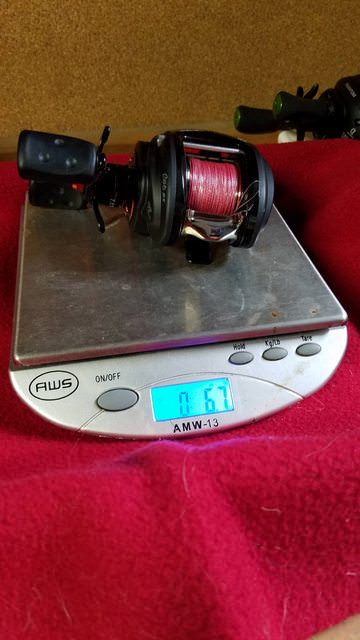
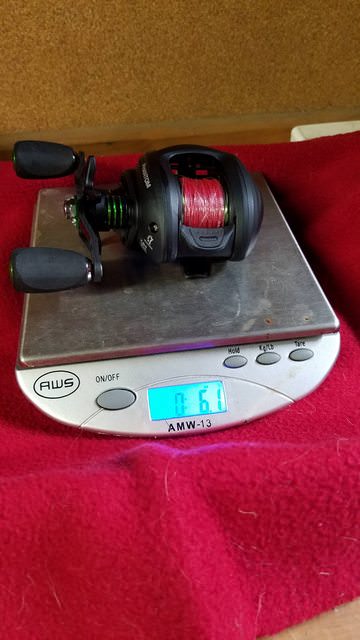
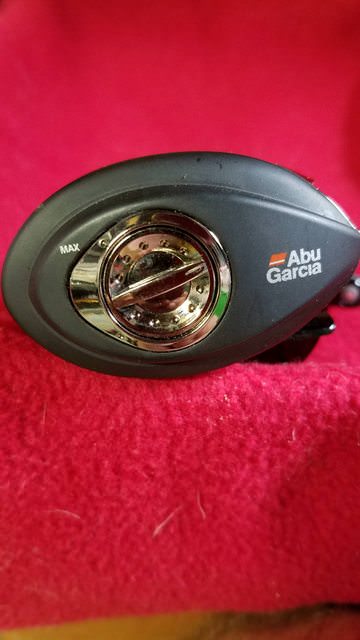


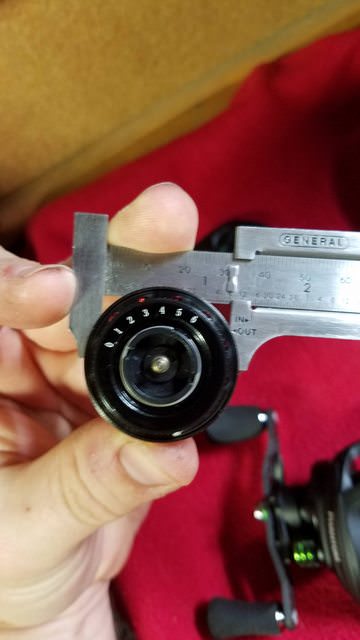
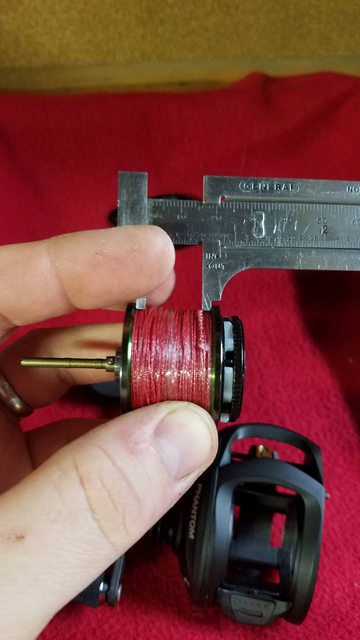
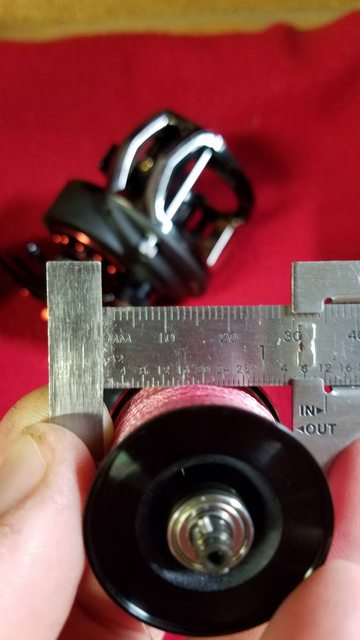
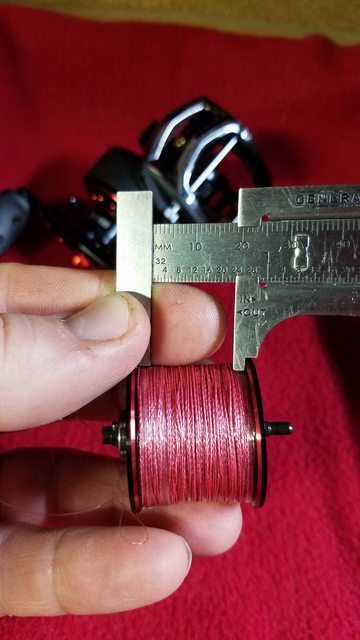
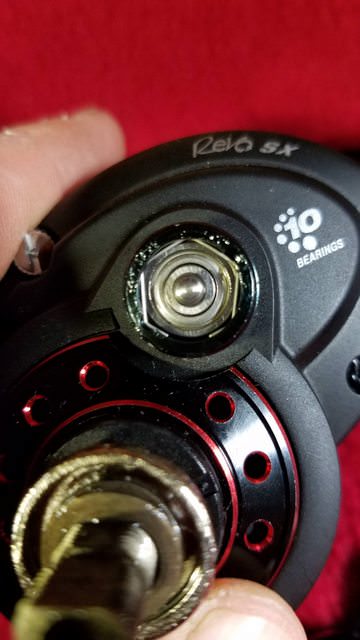
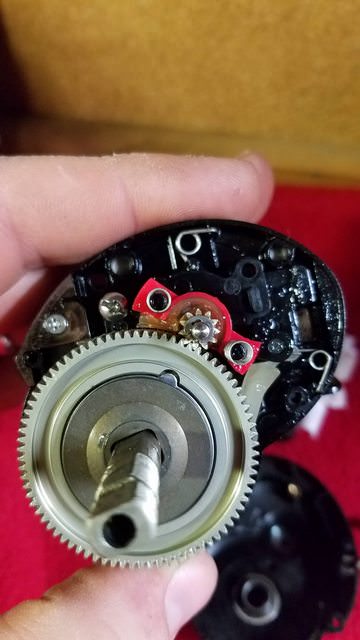

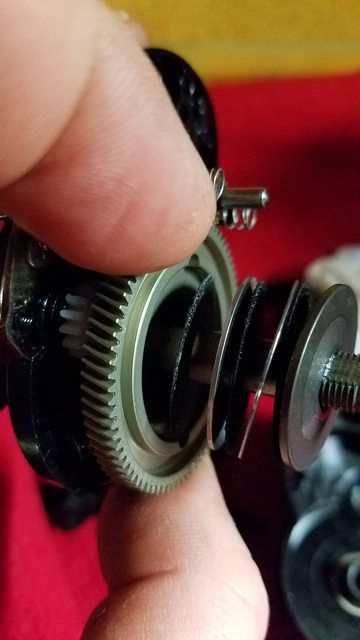
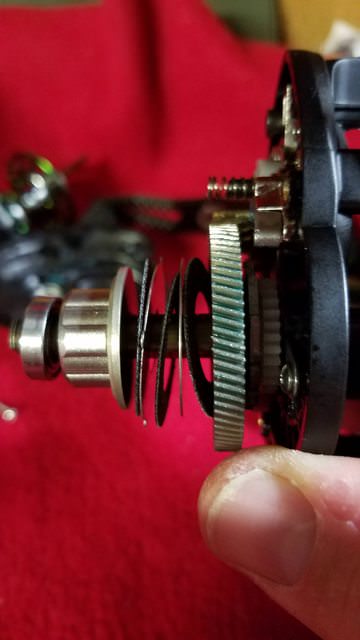
Leave a Reply
You must be logged in to post a comment.